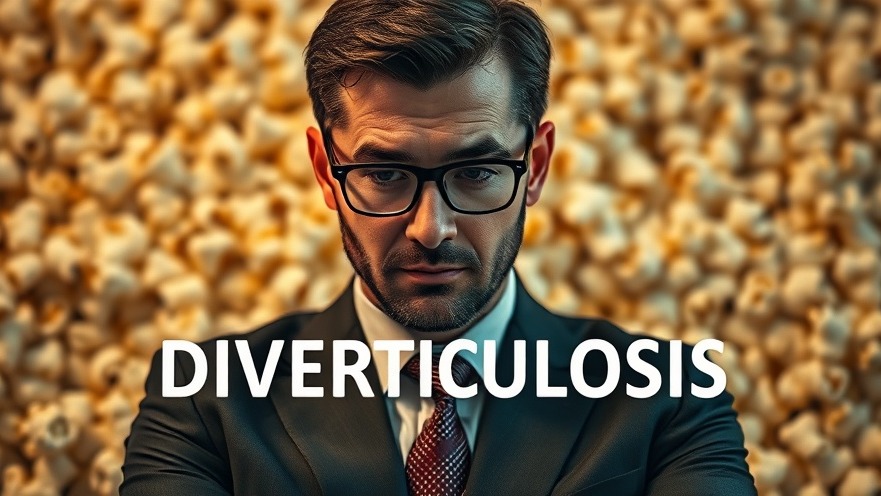
The Hidden Epidemic: Understanding Diverticulosis
Diverticulosis has emerged as a significant health issue for many individuals, particularly as they age. In fact, by the time we reach our 60s, a substantial portion of the population may unknowingly harbor this condition—characterized by abnormal outpouchings in the colon wall. Alarmingly, 10 to 25 percent of those who develop diverticulosis may progress to diverticulitis, leading to severe complications, including colon perforation and heightened mortality risk. This has led to thousands of emergency room visits annually.
In 'Diverticulosis Diet: Should Nuts, Seeds, and Popcorn Be Avoided?', the video presents an insightful look into the misconceptions surrounding dietary choices for diverticulosis, prompting us to delve deeper into this critical health discourse.
Historical Context: The Rise of Diverticulosis
Interestingly, diverticulosis was virtually absent from medical literature until the 20th century. It mirrors a deficiency disease of Western civilization, akin to scurvy resulting from insufficient vitamin C. The suspected culprit? A diet low in fiber. As Western diets shifted toward refined grains, the incidence of diverticulosis surged, spurring medical professionals to search for a solution to this modern epidemic.
The Fiber Connection: Bowel Health and Dietary Choices
Insufficient fiber intake leads to harder stools that require excessive straining during bowel movements. This increased pressure can cause pouches to form in the colon, leading to diverticulosis. In contrast, demographics in rural Africa—whose diets are rich in whole plant foods—illustrate a stark absence of this condition. Their high fiber intake aligns closely with estimates of our Paleolithic ancestors' diets, suggesting that dietary habits significantly influence colon health.
Debunking Myths: The Truth About Nuts, Seeds, and Popcorn
For many years, a common recommendation for those diagnosed with diverticulosis was to avoid consuming nuts, seeds, and popcorn due to fears of these foods lodging in outpouchings. Recent studies have debunked this myth, indicating no substantial evidence supporting the notion that such foods exacerbate diverticulitis. In fact, research from respected institutions like Harvard University revealed protective associations between nut and popcorn consumption and lower diverticulitis risks.
Emphasizing Dietary Shifts: The Role of High-Fiber Foods
This pivotal research underscores the importance of a high-fiber diet—not avoidance—as a cornerstone of management strategies for individuals with diverticulosis. Foods abundant in dietary fiber, such as whole grains, beans, nuts, and seeds, are not only integral to digestive health but may also play a crucial role in mitigating the severity of diet-related diseases.
Future Directions: Rethinking Dietary Guidelines
As the conversation around diverticulosis evolves, there is an urgent need to re-evaluate dietary guidelines and public health policies surrounding fiber intake. With evidence suggesting that higher fiber consumption can drastically reduce the incidence of diverticulitis, the medical community must pivot towards advocacy for dietary enrichment, prioritizing fiber as a public health initiative.
Practical Applications: How to Integrate More Fiber into Your Diet
Integrating fiber-rich foods into your daily meals can be both simple and enjoyable. Start small; incorporate whole grains into your breakfasts, opt for beans in your salads, and don’t shy away from nuts as snacks. Transitioning into higher fiber intake doesn’t have to be daunting—consider smoothies as a great way to introduce fruits, vegetables, and seeds into your diet effortlessly.
In summary, eating more plants is not just a dietary recommendation—it could be life-saving. Refuting outdated myths allows for a clearer understanding and acceptance of nuts, seeds, and popcorn as part of a balanced, fiber-rich diet. It’s time to transform how we perceive dietary choices regarding diverticulosis and embrace evidence-based practices for healthier living.
 Add Row
Add Row  Add
Add 







 Add Row
Add Row  Add
Add 


Write A Comment